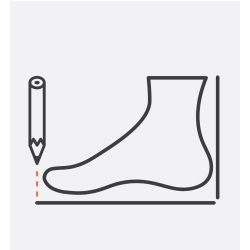Choosing the right shoe size is crucial for the health and comfort of your child’s feet. Here are some practical tips on how to measure your child’s feet correctly and avoid common mistakes.
Measuring the Foot
- Measurement Frequency: Young children’s feet grow quickly, so it’s advisable to check their foot size every few months.
- Best Time to Measure: Measure the foot in the evening, as feet can swell slightly during the day and are largest in the evening.
- Measurement Position: Find a wall without a baseboard. Have your child place their heel against the wall with toes relaxed. Make a mark at the tip of the longest toe. Measure the distance from the wall to the mark to get the correct foot length.
- Difference in Foot Sizes: It is completely normal for one foot to be slightly larger than the other. Always choose shoes based on the larger foot.
- Growth Allowance: The shoe size should be the foot length plus 1.5 cm to allow toes to move freely. (Reima shoes already include this 1.5 cm growth allowance.)
- Using Insoles: Remove the insole from the shoes and have your child stand on it, distributing their weight evenly. This helps ensure the shoes fit properly.
- Growth Allowance for Boots and Sandals: Boots should have a larger growth allowance, while sandals need a smaller one.

Common Mistakes in Measuring Feet
- Holding the Foot in the Air: Do not measure the foot while it is in the air. The foot must be firmly on the ground.
- Incorrect Drawing: If the foot shape is drawn on paper from underneath the foot curves, the measurement might be inaccurate.
- Not Considering Body Weight: If the child does not place their weight on the foot, the measurement can be off by 0.5 to 1 cm, affecting the shoe fit.
Summary
The right shoe size ensures that your child’s feet receive the necessary support and comfort, which is essential for healthy development. Well-fitting shoes make a child happy and comfortable, enhancing their daily activities.


